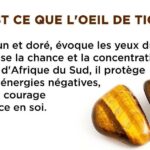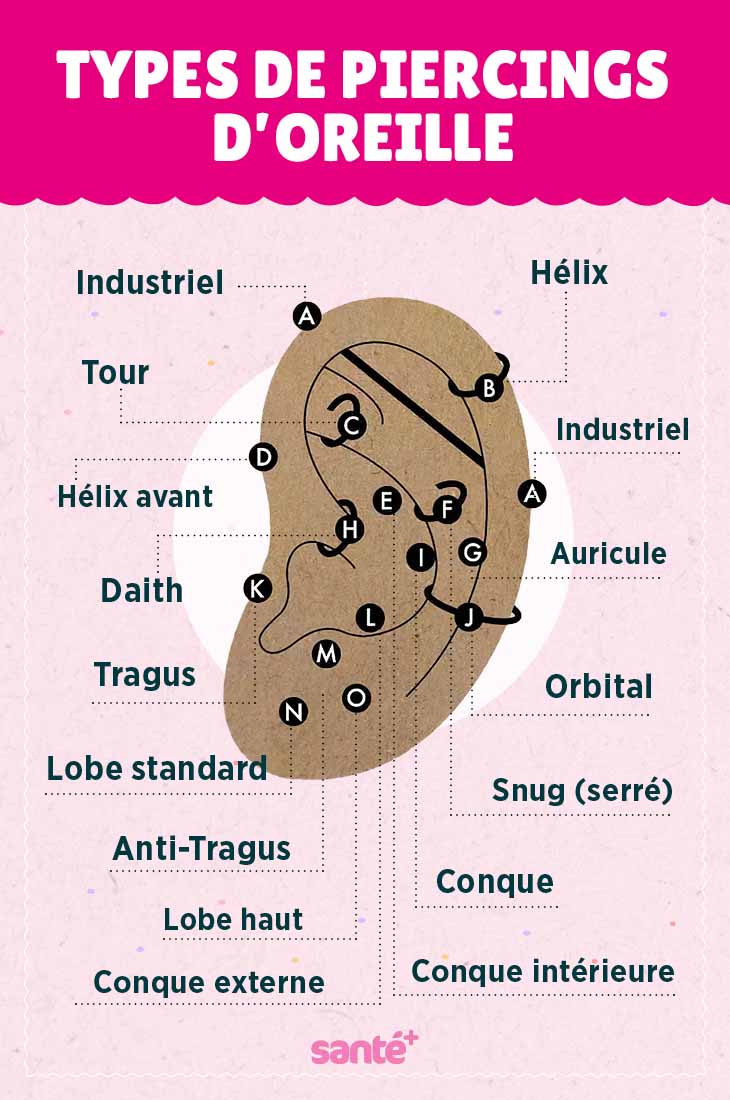
What are the different types of ear piercings?
With all the options offered, it is often difficult to decide on the piercing that would suit you best. Especially since the price, model, pain level and follow-up all vary from one piercing to another. So, before you even embark on this adventure, it is better to first inquire with your dermatologist to make sure that you do not risk any allergy. And, it is important to know the different types of piercings to make the right choice. Before even going to a piercing salon to have you pierced permanently and offer you pretty earrings, we will guide you to better enlighten you on the subject. To get started, here are the different types of ear piercings.
1. Standard Lobe
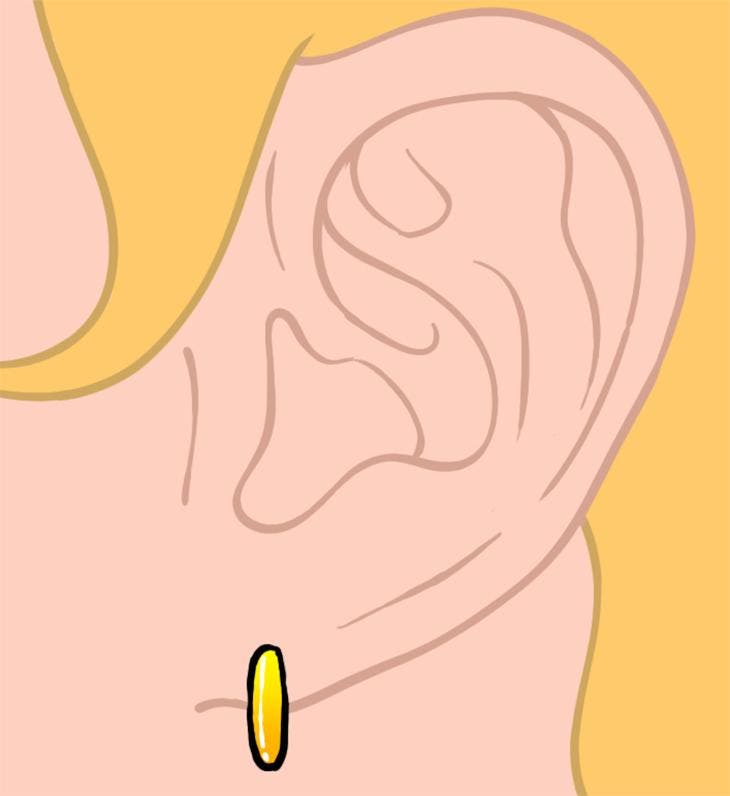
Pain level: 1/10
Healing time: 6-8 weeks
Ah, this is the simplest and most classic piercing! But, it is still relevant, of course! As Mika, manager of a piercing store in Rochefort, explains: “This is one of the most common piercings. In fact, I constantly encourage it, because the easiest part of the ear to heal is precisely the lobe. It’s even the least painful piercing, I give it 1 out of 10 on the level of pain.”
2. Daith Piercing
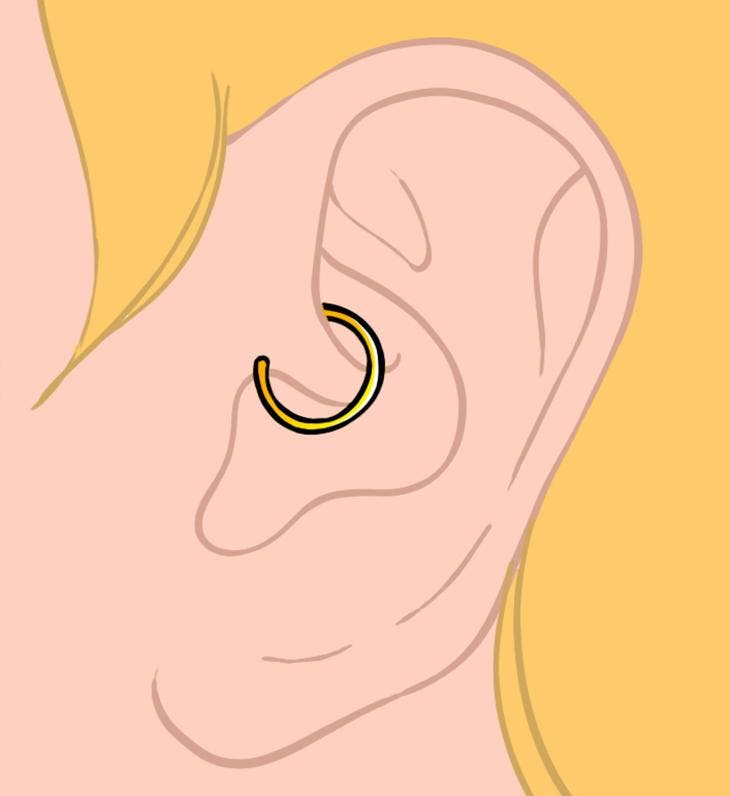
Pain level: 5/10
Healing time: 6-9 months
It is located in the hoop that hugs the cartilage inside your ear. This piercing is therefore quite uncomfortable and requires a qualified piercer. But, in addition to being stylish and elegant, this piercing in the hollow of the ear has unexpected virtues: as this area represents an acupuncture point, it turns out that this piercing has the ability to fight headaches, migraine, anxiety and stress says Camille Ozil, dermatologist in Paris. But, you will have to be brave, because you will surely feel quite a strong pressure when piercing. And, as with any new piercing, it is not advisable to sleep on it, at least until it is completely healed. But, rest assured, after a few months, there will be no more worries.
3. Helix Piercing
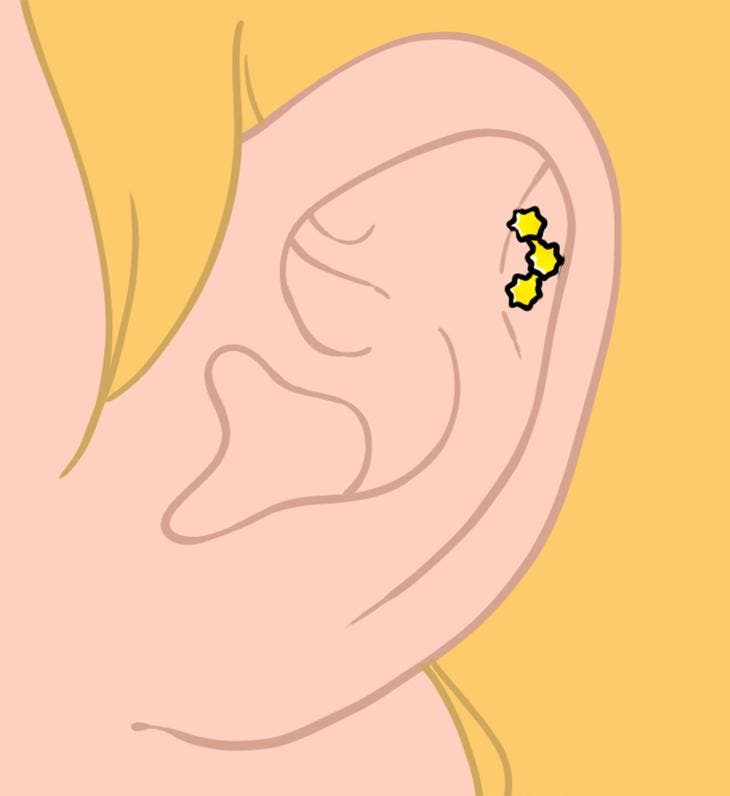
Pain level: 4/10
Healing time: 6 months to 1 year
Another essential piercing (it is often the one done after the lobe), it is performed on the upper outer part of the pinna, in the very place that bears the name of helix. More popular and trendy than ever, this piercing is still in high demand! The piercers even offer an accumulation of loops at this level. “Basic or not, these cartilage piercings are super cute and usually land on the edge or middle of the ear for the most part. This area allows custom placements and original styles. I try to encourage people to go beyond the little hoop here,” says Mika.
4. Front propeller
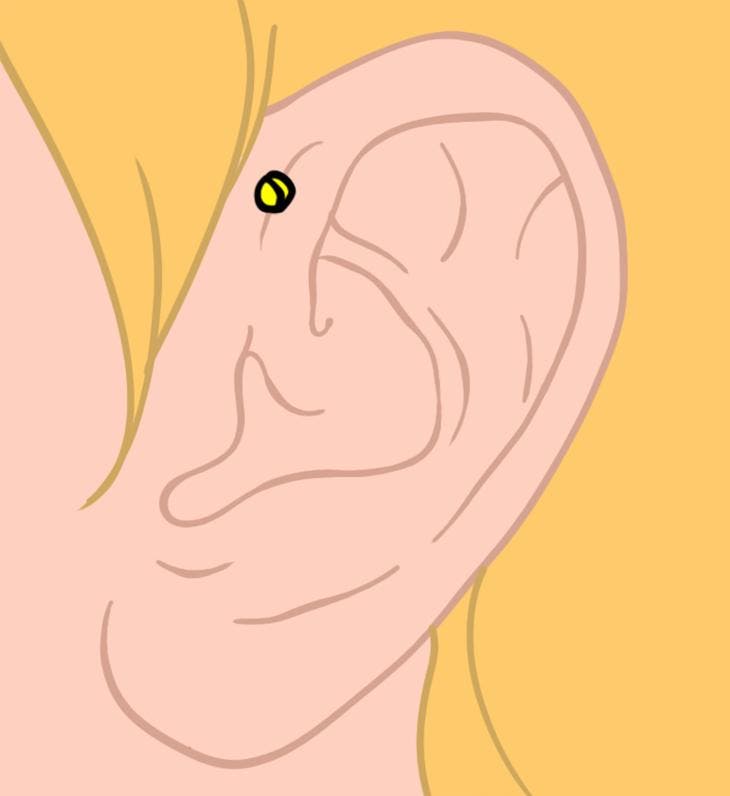
Pain level: 5/10
Healing time: 3-9 months
Here is another cartilage piercing: a forward propeller is also placed on the upper ear above the tragus. This piercing is a little trickier than that of a typical helix, as the piercing must be perfectly aligned with your ear. Moreover, as much to warn you, it will probably be more painful than the standard lobe piercing says Mika. Depending on the experience of your driller, a needle or a special machine can be used.
5. Tragus Piercing
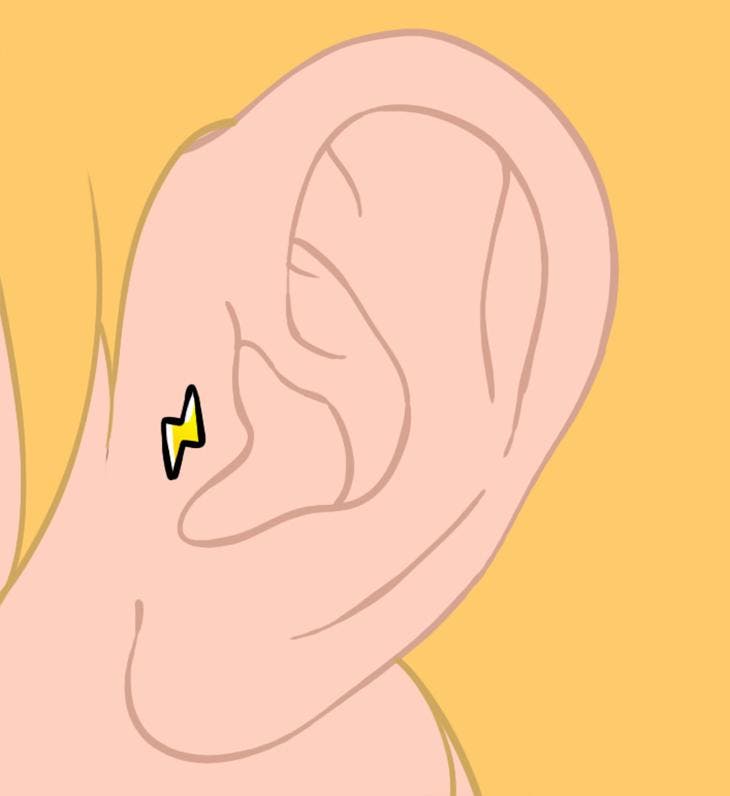
Pain level: 5/10
Healing time: 6-9 months
The tragus represents this small flap that partially covers the entrance to the external ear canal of the ear, in the round or triangular part. It can bring a real rock or glamorous touch, especially if the ear is well cared for ande you adorn it with a nice stud or a comfortable hoop.
“This piercing takes time to heal, especially if you’re used to wearing headphones every day. Because the tragus is there to protect the outer part of your ear canal, by piercing it, you disrupt the wearing of your headphones. Every time you put them in the ears or remove them, your piercing is irritated, so it can’t heal quietly. ». “As I often tell my ciens: if you are as agitated as me, it is better not to do this piercing,” adds Mika.
6. Anti-tragus
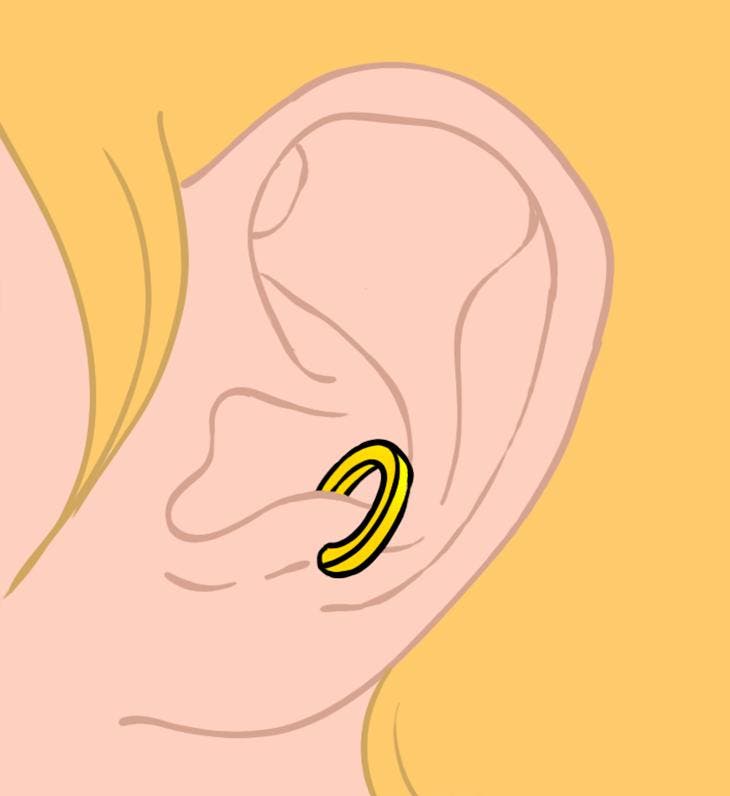
Pain level: 6/10
Healing time: 9 months to 1 year
Nestled on the outer cartilage part, the anti-tragus piercing sits right in front of the traditional tragus bump, above the earlobe. If this location is not prominent enough, some piercers may refuse to perform the task so as not to alter the shape and flexibility of the ear. In terms of jewelry, ball closure rings are the best option for this piercing.
7. Conch piercing
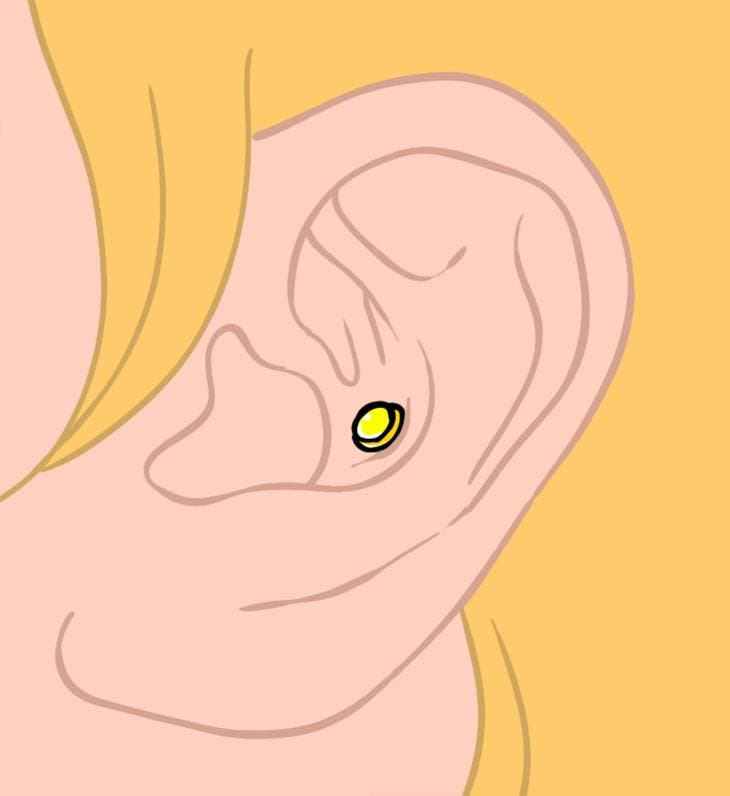
Pain level: 4/10
Healing time: 3-9 months
The conch piercing, also called “conch piercing” is located in the middle part of the cartilage of your ear, and it gets its nickname from its resemblance to the spiral shell of the same name. It is versatile and very aesthetic, but quite painful. It can be pierced with a stud for a subtle effect, a double stud (if you have the courage!), or even a cuff that can hug the contour of your ear.
8. Inner conch shell
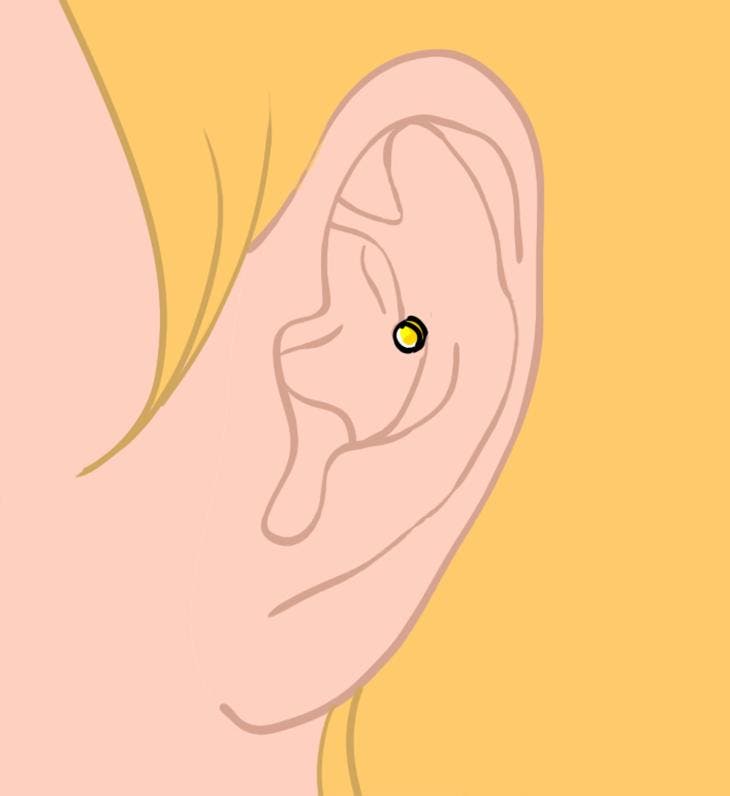
Pain level: 6/10
Healing time: 3-9 months
The inner conch is pierced through the middle shell of the ear, the thickest piece of cartilage. But be careful, since this piercing is closest to the ear canal, you must absolutely respect the healing process. So, you should especially avoid wearing headphones for a while, as they are likely to irritate your new piercing badly.
9. External Conch
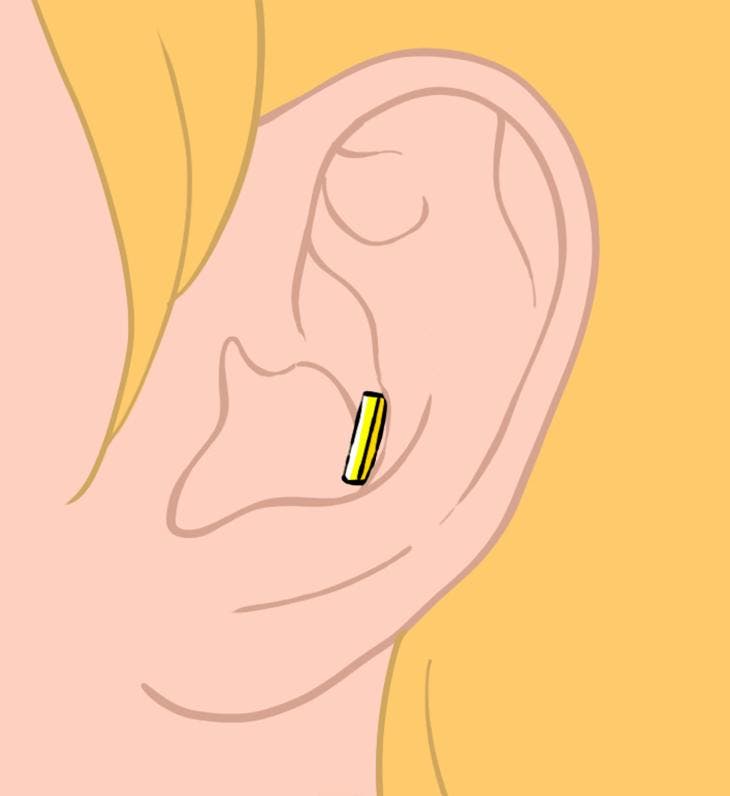
Pain level: 6/10
Healing time: 3-9 months
Similar to the previous one, the outer conch is also pierced through the same area of cartilage of the ear, but this time it is the lower part. As a precaution, you are advised to sleep on the opposite side until your piercing is completely healed.
10. Industrial piercing
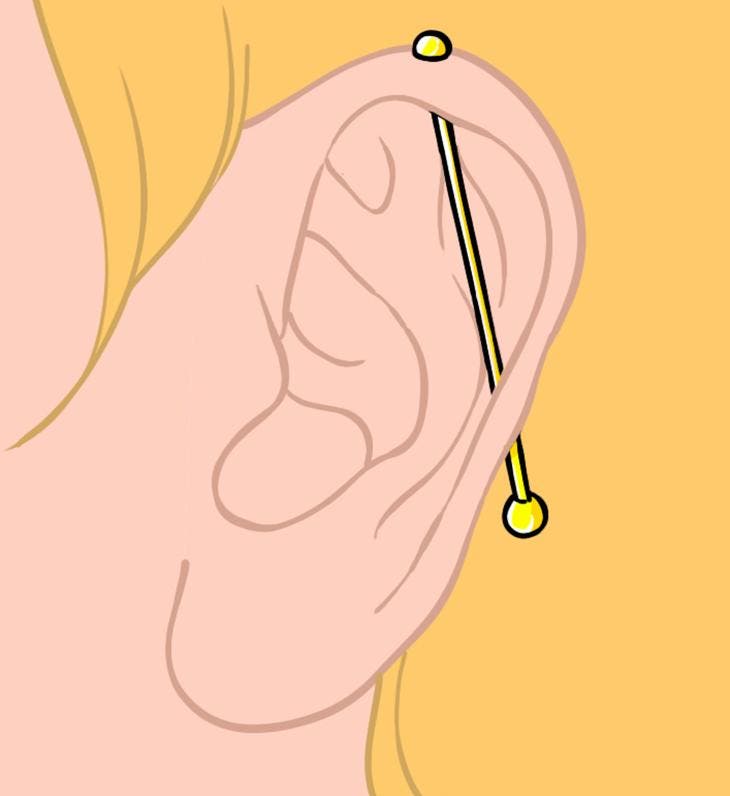
Pain level: 6/10
Healing time: 9 months to 1 year
Industrial piercing, also known as “Scaffold piercing,” is essentially “a straight bar connecting one cartilage piercing to another on the upper ear,” Mika describes. “They’re hard to heal because it’s two cartilage piercings instead of one. Since they are connected, they tend to get irritated quickly and stay that way.” It therefore requires a very conscientious follow-up. “Be very careful not to let your hair or glasses sit on it. And even to sleep, change position so as not to disturb the healing. Mika warns. He goes on to explain: “Generally, I advise against this type of piercing to my clients, simply because most people can not manage it well because of the time it takes to heal. “
11. Upper lobe piercing
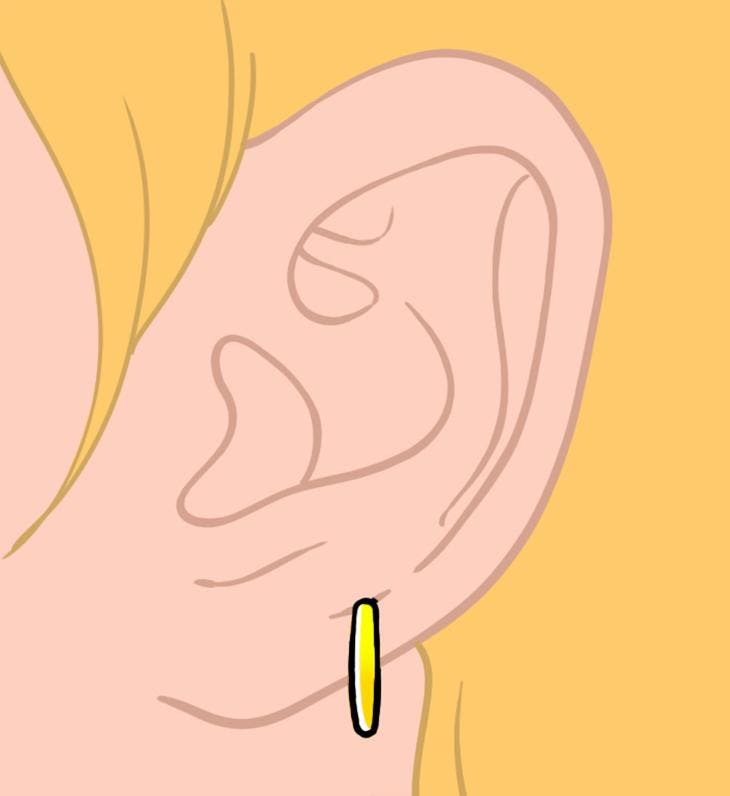
Pain level: 2/10
Healing time: 6-8 weeks
By piercing the top of the earlobe, it is sometimes very useful to improve a misplaced piercing that you may have done earlier. Thanks to the fleshy lobe, the level of pain is very low. But, although the healing time is relatively fast, that doesn’t mean you have to be nonchalant. and careless in terms of follow-up. A tip: whatever piercing you choose, always follow your piercer’s instructions for post-care and maintenance.
12. Tower Piercing
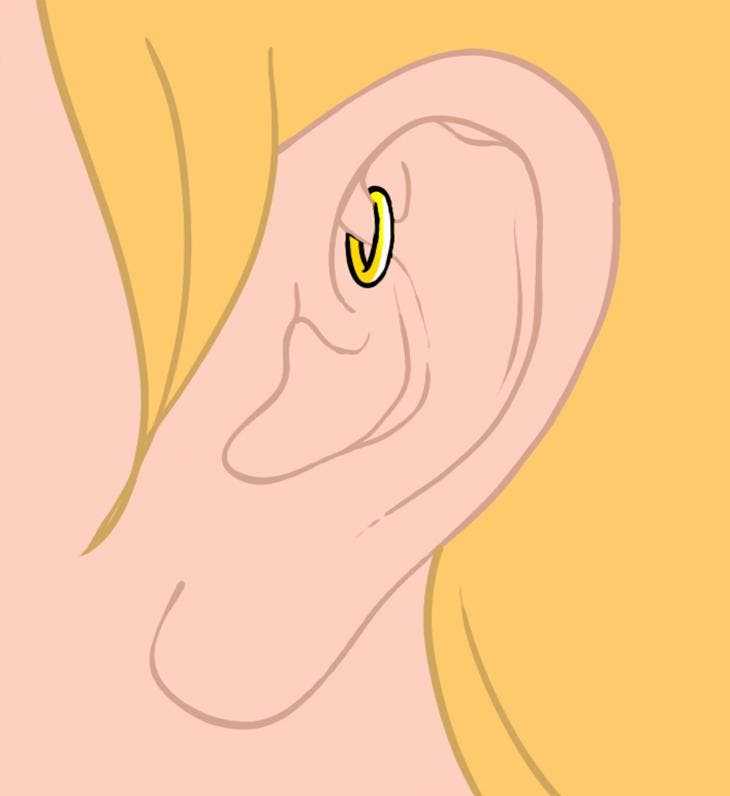
Pain level: 6/10
Healing time: 3 to 10 months
This is one of the most unusual piercings. It is inserted into the inner cartilage of the ear, above the daith, between the inner conch and the forward propeller. And if it is so rare, it is mainly because you may feel strong pain and acute pressure at first, followed by a more general swinging. In fact, because of the thickness of the tower’s cartilage, it is more painful than a helix or tragus piercing. True, it fits perfectly to the hoop, although a bar is usually more recommended for the initial healing period.
13. Auricle / mid-helix
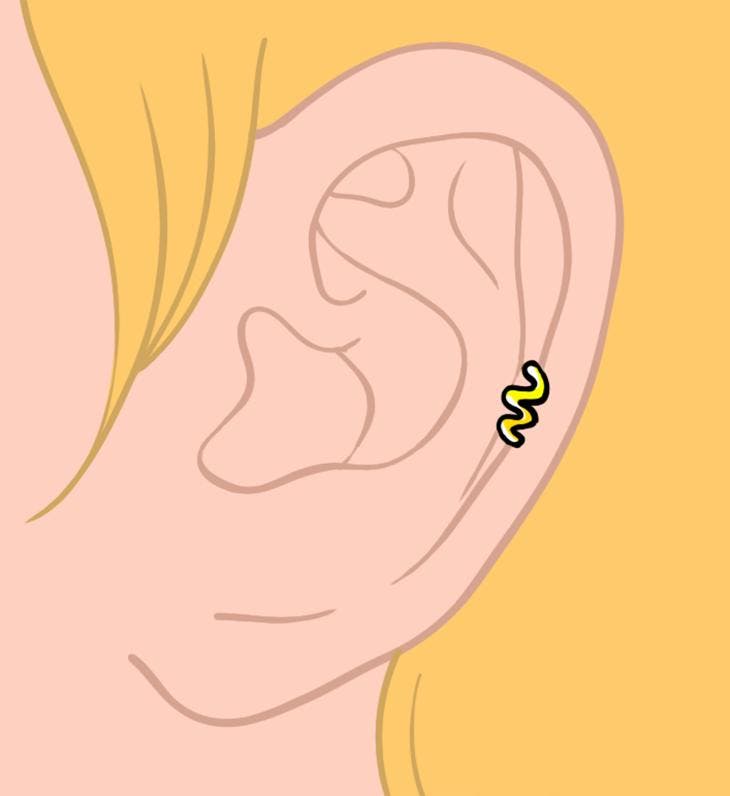
Pain level: 3/10
Healing time: 3-9 months
Located on the outer part of the ear, between the lobe and the helix, this piercing, also called “mid-helix”, is worn halfway up the ear in front of the tragus. As the cartilage is relatively fine for the area, The pain is at the lower end of the scale. On the jewelry side, hoops and studs work well for this type of piercing.
14. Anti-helix piercing
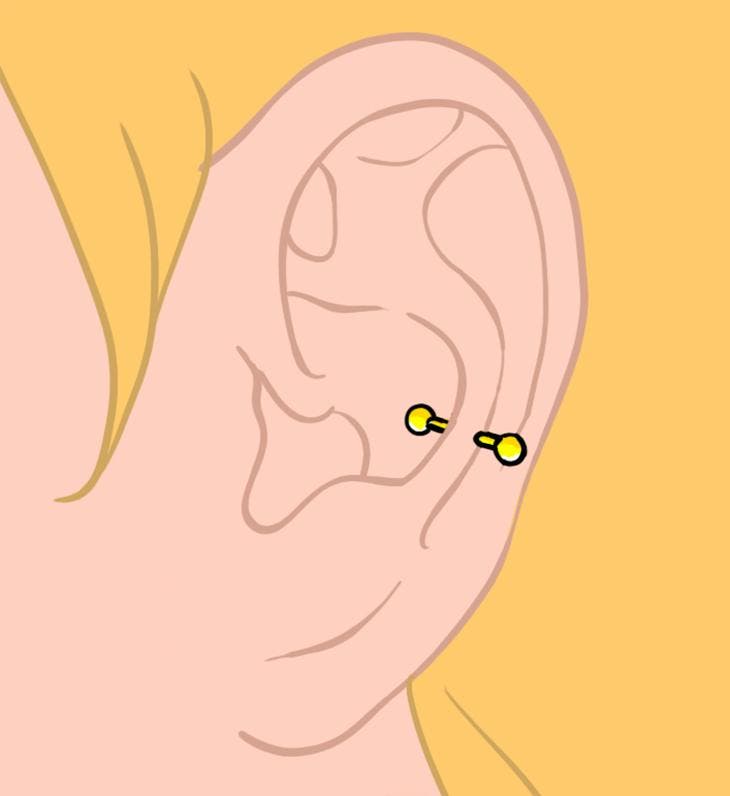
Pain level: 9/10
Healing time: 4 to 6 months
Pierced horizontally through the inner edge of the cartilage, above the anti-tragus, this well-fitting piercing is nicknamed “anti-helix”. It has the distinction of being considered the most painful cartilage piercing. So, if you are very sensitive to the level of pain, it is better to abstain. Only fine jewelry like a tiny hoop or tiny curved curls work here due to the very tight location.
15. Orbital Piercing
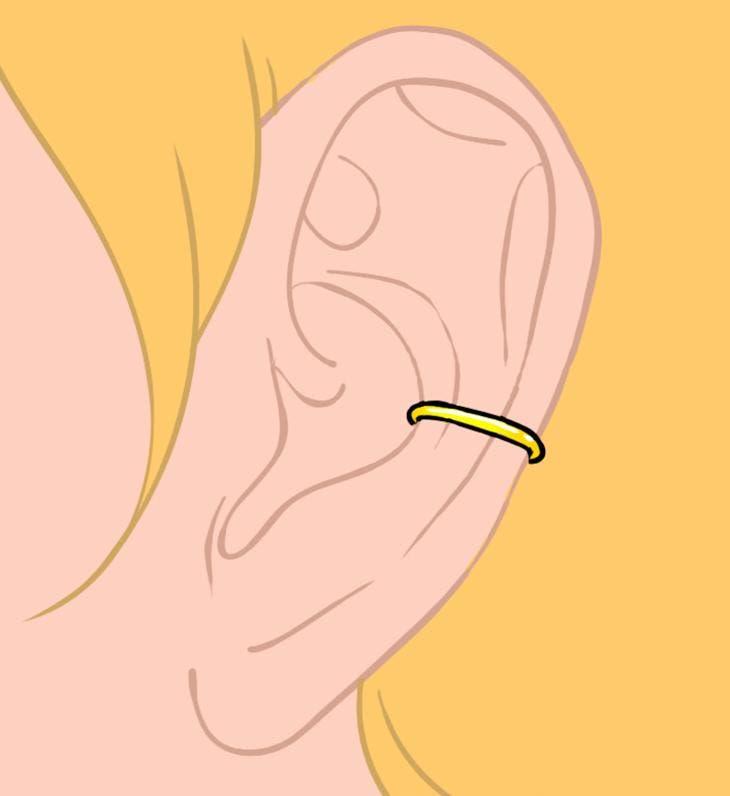
Pain level: 4/10
Healing time: eight to ten weeks
“Orbital” piercings are quite similar to industrial piercing. The jewel goes around the ear through two different perforations. To be technically accurate, it takes a ring to connect two piercings, piercing through the piercing of the conch, as shown above. Generally, it is placed in the lobe or helix. The difference with the industrial is that the ear is pierced with a ring rather than a bar, which gives the illusion that the piercing is in orbit around the ear.
16. Stacked lobe
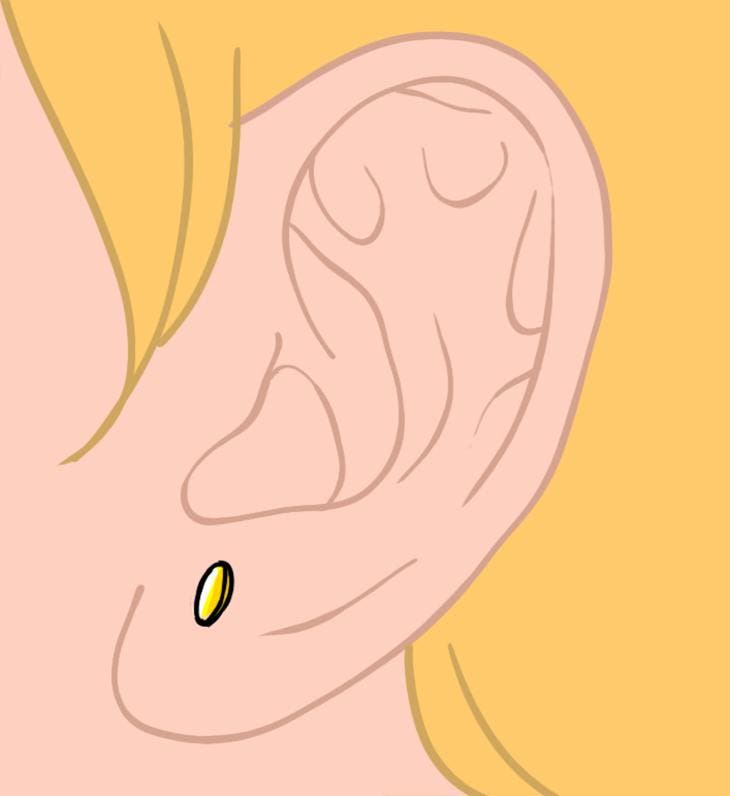
Pain level: 2/10
Healing time: 6-8 weeks
The piercing is done just above the traditional lobe piercing. And since it’s the same vertical area, the pain and healing time are pretty minimal. So it’s a great way to modernize your ear, adding that stacked effect.
Maintenance of ear piercing
Before you even go to stock up on ear accessories, first make sure you know how to properly maintain your new piercing. And this, of course, to avoid especially all kinds of annoying and unpleasant infections. “Don’t twist it, turn it or sleep on your freshly installed piercing,” Mika advises. Otherwise, it can increase the risk of infection or irritation. Not to mention that it also significantly prolongs the healing process. “Try as much as possible not to sleep on it and clean it with saline once or twice a day,” he continues. In general, contact with water (bath, pool, hot tub, etc.) should be avoided as much as possible for six to eight weeks after piercing. Also keep your new piercing away from “soap, peroxide, neosporin, bactin, rubbing alcohol, and other harsh chemicals,” he says.
What is the piercing that hurts the ear the most? ?
The Snug is surely the most feared piercing, so much so that it is extremely rare. It is a fold of cartilage that is nestled between the conch and the helix. As its perforation passes through two layers of cartilage, it is very delicate and the level of pain is very powerful. For its part, the tragus is also known to give a very violent pinching sensation. However, not all cartilage piercings always cause the same pain threshold. For example, helix is less painful than anti-tragus and other inner ear piercings that have harder tissue. Oh yes, it should also be noted that the level of pain during the procedure is largely related to the experience of the piercer itself. “If you choose an experienced professional to perform your piercing, it is likely that everything will go much more smoothly. He will surely have a better technique with the needle to make sure everything goes well, “concludes the piercer.
But, keep in mind that any cartilage piercing can hurt up to a week after piercing. Even if the inflammation subsides, this area of the ear doesn’t have as much blood flow, so you have to wait longer for complete healing, says Dr. Camille Ozil. Another thing to remember: when you create a sore in your ear, it can usually take three months to heal, which presents a greater risk of infection during this time, if you do not take your precautions. So, if you want to avoid damage and not cause severe pain, it is always better to follow the steps recommended by the professional, in order to prevent the slightest irritation during this period.
FAQ
How to clean an ear piercing?
Gently wash your piercings with water and a mild neutral (unscented) soap at least once a day. Rinse your piercings thoroughly after thoroughly cleaning. It is also advisable to use petroleum jelly (compressible tube): gently apply a thin layer around each opening. And, of course, always keep an eye on your ears to check for evolution.
When can I change my piercing?
In general, you need to wait about six to eight weeks to change your new piercing. Because, before this time, it may not be completely healed and you risk a possible infection.
How to treat an infected ear piercing?
If you think your piercing is infected, you should clean your ears with sterile saline or soapy water (mild, neutral soap) twice a day. Then you can apply antibiotic ointment or rubbing alcohol to the piercing. But, to take no risks, ask your dermatologist for advice.
What is the best ear piercing that hurts the least?
The standard lobe is the most popular piercing, it is the one that most people receive first. As it is the softest part of the ear and there is no cartilage, piercing is very easy to perform, fast and almost painless.
How much does it cost to have your ears pierced?
Piercing costs on average 15 to 20 euros per ear. But, obviously, the price is very variable from one studio to another and according to the different types of piercings desired. Some call for a more delicate pose, more expensive jewelry and proper care.



